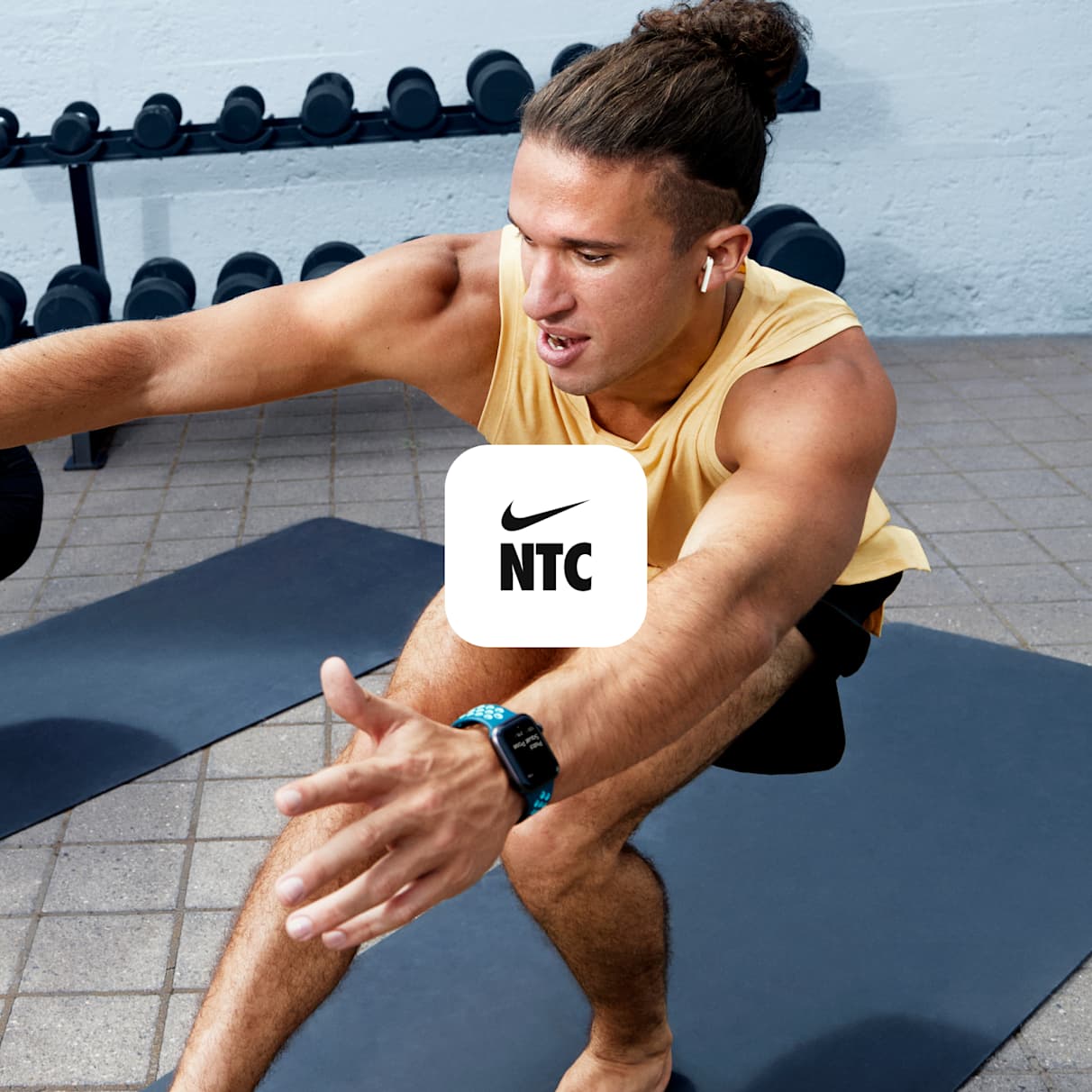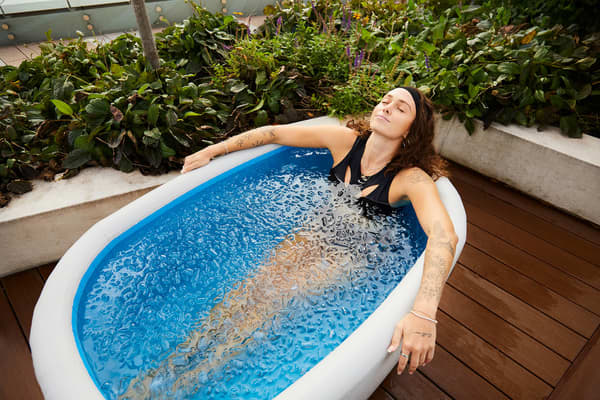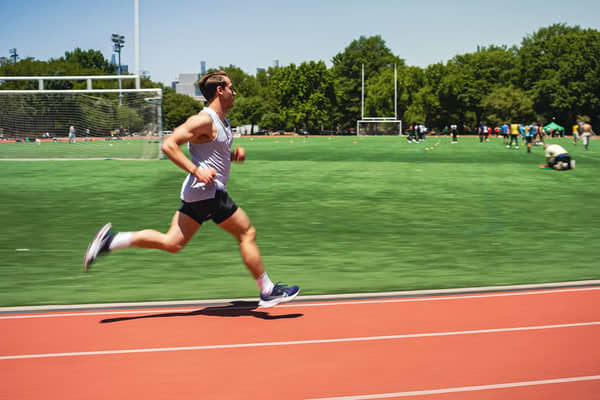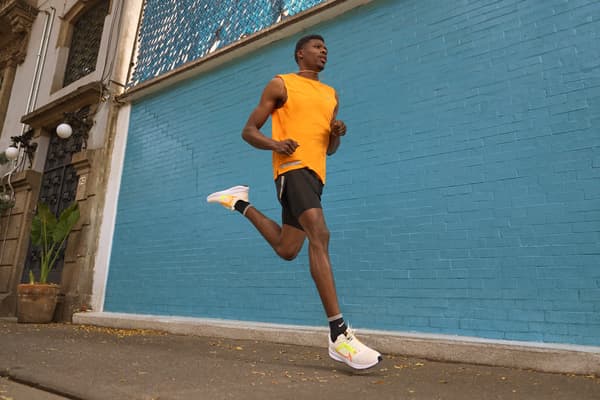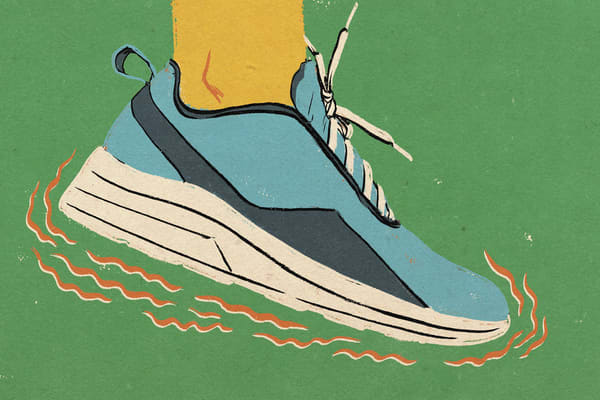How to Exercise With Osteoarthritis, According to Experts
Sport & Activity
Health professionals share appropriate exercises to try if you have arthritis and explain how these movements can help offset symptoms.

If you have arthritis, you're not alone. Globally, in 2019, there were 527.81 million cases of the degenerative joint disease, which most commonly affects the hands, lower back, neck, knees, hips and feet. With symptoms like pain, stiffness and swelling, all sorts of movement—especially exercise—can be difficult.
But you can and—as physiotherapists and orthopaedic surgeons suggest below—should work out, as long as you're cleared by your doctor. Read on for their tips on how to get your sweat on if you have osteoarthritis, the most common form of arthritis.
Why Exercise Should Be a Priority When Dealing With Arthritis
Movement is important for everyone—especially those with osteoarthritis, said Paul Nasri, DPT, COMT. Exercise encourages the circulation of nutrient-rich synovial fluid, which helps bones move past each other more smoothly, Nasri explained.
Since there's no blood supply to cartilage within joints, the only way for joints to get the nutrients they need is through movement, said Paul Y.F. Lee, a UK-based orthopaedic surgeon and professor.
According to Maura Daly Iversen, DPT and spokesperson for the American Physical Therapy Association, "Research shows that people with arthritis can exercise without worsening their pain and that regular physical activity can decrease arthritis pain".
The Key to Doing Exercises With Arthritis? Start Slowly

If you're new to exercise or restarting exercise, progress gradually, said Vanessa Kercher, clinical assistant professor of kinesiology at the School of Public Health at Indiana University.
"Having arthritis means that your joints may feel more easily irritated by activity or require more time to recover from workouts", explained Miho J. Tanaka, MD, PhD, and associate professor in the Department of Orthopaedic Surgery at Harvard Medical School.
"Sudden increases in activity levels do not allow time for the body to adapt and can be a common cause of joint pain in patients who have arthritis", Tanaka said.
That's why Kercher recommended starting with five- to 10-minute periods of exercise, adding up to 20 to 30 minutes per day. The goal is to reach 150 minutes of moderate intensity per week.
Which Exercises to Focus On

Focus on building strength rather than endurance, Lee advised. Many studies suggest that increasing muscle strength and mass can help the muscles act as shock absorbers, taking pressure off the joints, he said
Exercises promoting balance are also important, since stabilising the ligaments helps distribute force to the joints more evenly, Lee said.
Muscle stiffness and restricted range-of-motion can increase the risk of instability, according to Iversen. "Exercises such as tai chi or yoga combine strengthening, stretching and balance and coordination", she said.
In general, choose exercises that strengthen without placing impact on the joints, Tanaka said. Think: low-impact activities like cycling, using the elliptical machine, doing yoga or Pilates, walking, swimming or taking a water aerobics class.
"Water helps support your body weight by minimising gravity, leading to less stress on your joints", Kercher said.
Of course, it's always a good idea to consult with your doctor, a physiotherapist or a certified personal trainer before trying any new exercises.
(Related: What Are the Benefits of Swimming?)
Exercises to Minimise With Arthritis

In general, limit high-impact activities, like running and jumping, which can overload the joints, Nasri said.
Beyond that, take a cue from your body and reflect on which joints cause you pain. When lifting weights, if you have knee arthritis, consider skipping the leg extension machine, said orthopaedic surgeon Jerome Enad, MD, FAANA. It puts excessive stress on the patellofemoral joint and can flare up arthritis, he explained, suggesting the sitting leg press as an alternative.
Skip deep squats or lunges if you have hip or knee arthritis, suggested Lucas Buchler, MD at Orthopaedic Surgery and Sports Medicine at Northwestern University Feinberg School of Medicine.
"Generally, it's best to avoid movements that force the joints into end ranges of motion. Although these activities are unlikely to cause major structural harm to the joint, they are likely to cause inflammation and symptom exacerbation", Buchler said.
When you have shoulder or elbow arthritis, Enad recommended steering clear of the bench press and dumbbell flys and choosing push-ups or dips instead.
(Related: What Muscles Do Push-ups Work?)
How Much Pain Is Too Much
It's important to understand that some discomfort from exercise is normal and can be expected, said orthopaedic surgeon Kellie K. Middleton, MD, MPH.
However, knowing the difference between good and bad pain is crucial. Good pain (or discomfort) should feel like muscular fatigue or accomplishment after completing an exercise, Middleton explained. Meanwhile, bad pain is sharp or shooting pain localised in one area. Stop exercising if you experience intense pain, which could indicate a more severe problem, she said.
Post-exercise, assess how you're feeling and see your doctor if the pain persists, Nasri suggested.
How to Modify Moves

Working alongside a professional, such as a certified personal trainer or physiotherapist, can be helpful. In general, though, try to shorten the range of movement until it's pain-free, advised Enad. "You'll still be working the target muscles in the shorter range", he said.
Another way to modify moves is to lower the weight or number of repetitions performed per set, Nasri said.
Middleton recommended using cushioned mats to prevent joint discomfort. "They'll help reduce joint strain while still providing an effective workout", she said.
Why Stretching Is Key

"Stretching is important for those with arthritis to prevent further joint damage and stiffness", Middleton said.
Since adults with arthritis often have restricted range of motion in their joints, stretching before swimming or engaging in any aerobic exercise could also improve posture and help reduce the chance of injury, Iversen said.
Try warming up with dynamic stretches, like arm circles and leg swings, Middleton suggested. Then, post-exercise, stretch again. Opt for static stretches, such as hamstring and calf stretches, to cool down and prevent soreness, she said.
When it comes to static stretching, Enad recommended performing them to the point of maximal stretching, not pain. Hold each position for 10–20 seconds without any bouncing, he added.
(Related: 5 Benefits of Stretching Daily, According to Experts)
The Bottom Line
Exercise is there to support you, not cause more discomfort.
"In people with osteoarthritis, physical activity can improve cardiovascular health and muscular strength without aggravating joints", Kercher said. "Physical activity is one of the best ways to strengthen the muscles around the joint, maintain bone strength, support joint motion and improve physical function", she added.
Again, be sure to ask your doctor or physiotherapist for help planning your exercise routine. Then, be patient, since finding the right programme might take a bit of legwork.
Words by Dina Cheney
